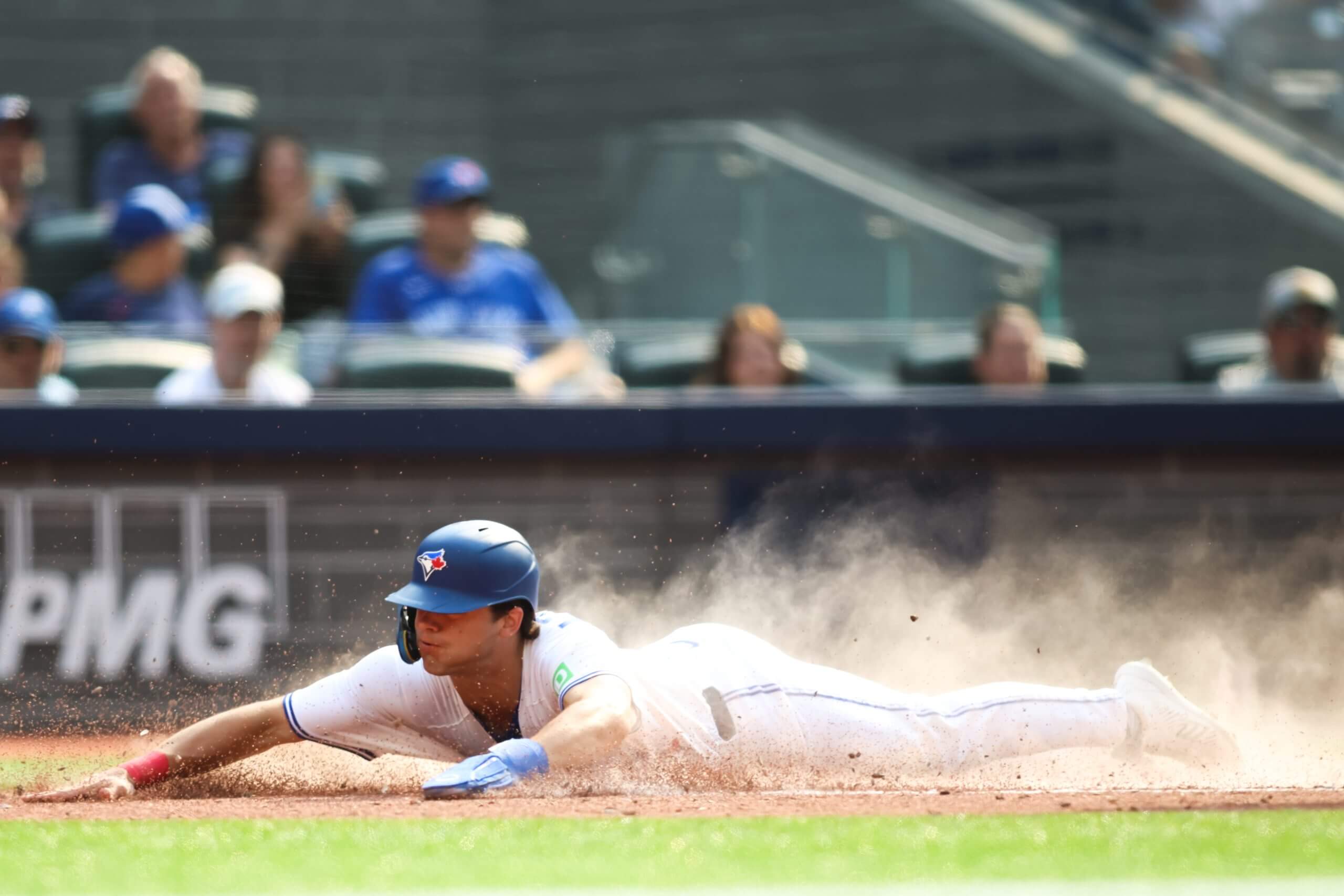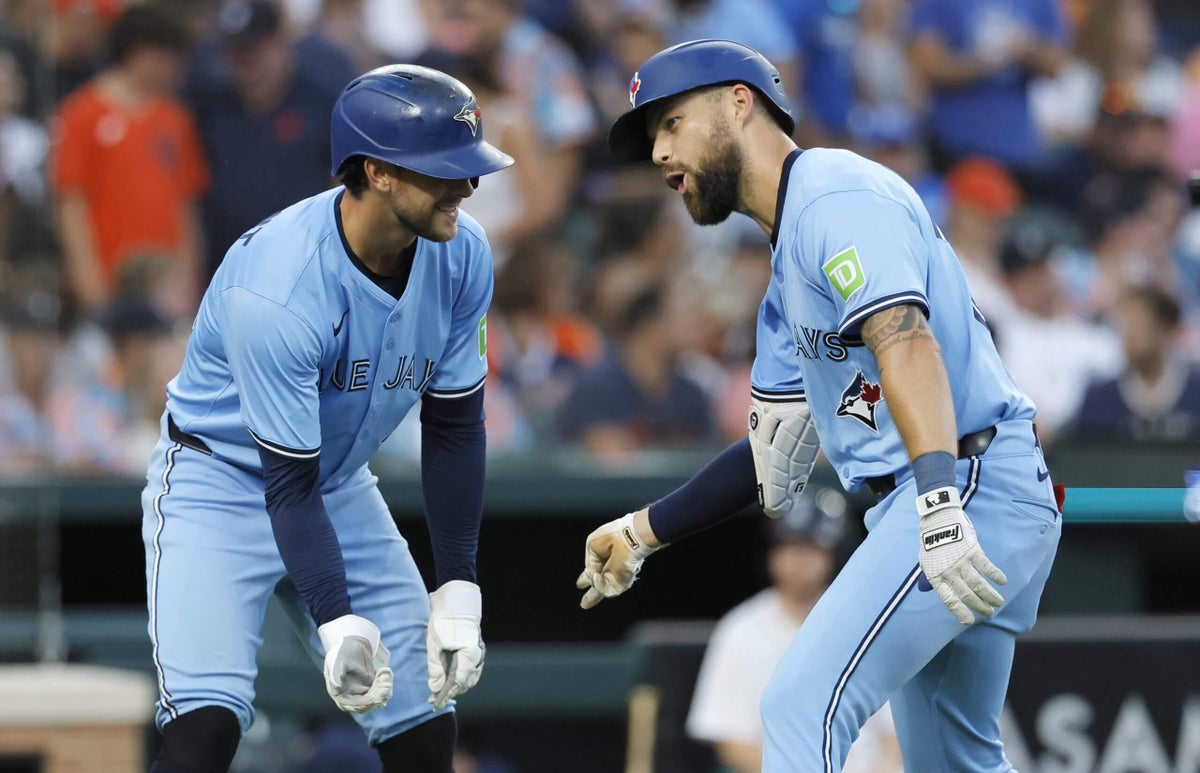On April 30, the Toronto Blue Jays’ odds to win the American League East were at 7 percent. Now, with less than eight weeks remaining in baseball’s arduous 162-game schedule, Toronto’s odds of taking its first division title in a decade are nearly 70 percent.
The AL is wide open, and first-place Toronto is a legitimate candidate to play deep into October. It’s a shift for a talented club that for years has fallen short of expectations but is now finally exceeding them. The Jays, who told free agents all winter they were all-in on the 2025 season, were still projected by FanGraphs to win 82 games and finish fourth in the AL East when the season began. Since May 1, they’ve surged to a 53-32 record, a complete turnaround from a last-place finish in 2024 in which manager John Schneider acknowledged “everything went to sh–.”
Toronto — which has the benefit of deep-pocketed ownership in Rogers Communications Inc. — boasted a record payroll last year only to flounder and sell off expiring contracts at the trade deadline. The front office’s message then wasn’t that the team was giving up on its core group. Instead, they insisted, the trades were designed to bolster the farm system and turn things around quickly. Still, the wait-and-have-faith approach didn’t exactly sit well with a restless Toronto fan base that hasn’t seen a playoff series win since 2016.
The Jays — who stayed aggressive with last week’s trade deadline additions — seem to have unlocked the promise of a talented core, which is playing with an exuberance that eluded previous iterations.
“It mostly comes down to me not putting the pieces together appropriately,” said general manager Ross Atkins, who wasn’t quite on the hot seat this winter but was the source of significant fan frustration. “We needed to make an adjustment. We thought long and hard about our process and the alignment we had.”
In 2021, Toronto scored 846 runs (5.22 runs a game). By last year, a team built more on run prevention scored just 671 runs (4.14 per game). Small tweaks, Atkins acknowledged, weren’t working. The 2024 Jays featured a middling offense that hit the fifth-fewest home runs in baseball and ran the bases terribly. Only the Yankees (-16 runs) got less out of their legs than the Jays (-14), according to Statcast.
The offseason overhaul began with the hiring of hitting coach David Popkins, who made such an impression during his interview that he was offered the job that night. “Easiest hire of my managerial career,” said Schneider, who felt like his players were eager for more information and a modernized approach. Popkins and assistant hitting coaches Lou Iannotti and Hunter Mense have received rave reviews for overhauling pregame and in-game prep and taking a creative approach to scoring. The Jays put the ball in play more than anyone in baseball (they entered Wednesday with an MLB-best 17.1 percent strikeout rate), and the trio of hitting coaches emphasize each player’s strengths.
“Be who you are,” is one of Popkins’ popular phrases, which has resulted in Myles Straw bunting, contact master Ernie Clement tapping out 112 hits in his first 112 games and George Springer being on track to have his best offensive season since joining Toronto before the 2021 season. The Jays were a good contact team last year (20.3 percent K-rate), but they’re better this year, with improved power and a deeper, more multi-faceted lineup. The Jays have scored the sixth-most runs in baseball (556) this year with an MLB-best .267 batting average. They could be the first team to finish a season with a sub-18 percent strikeout rate since the 2017 Houston Astros.
The Jays have won thanks to multi-homer games by Springer (who is rehabbing from a concussion). They’ve also won with small ball. In keeping strikeouts low and the ball in play, there’s constant pressure on opposing teams. “Know what club to take out of the bag,” is another Pop’ism, an ode to golf and a directive toward situational hitting. If a spot calls for a bunt, take out your putter. If it calls for a home run, get the driver. Players have bought into that approach, one made considerably easier on a team that uses its whole roster to mix and match and maximize every game.
“That was the message from Day 1 of spring training,” Schneider said. “Everyone is going to be a part of this.”
If you’re not starting for the Jays, you’re probably still playing. Toronto routinely uses 11 or 12 of its 13 position players in games, with 15 players who have at least 100 at-bats. The roster is built for flexibility. Nathan Lukes, Joey Loperfido and Straw can handle all three outfield spots, Addison Barger moves between third base and right field, Davis Schneider (no relation to John) bounces from left field to second base to designated hitter, and Clement can pretty much slot in anywhere on the dirt.
“His glove is one of the best infielders I’ve been around,” marvels Jays starter Kevin Gausman.
Regulars like Bo Bichette — who leads the team with 74 RBIs — call the Jays’ part-time players the heartbeat of the team. Bichette, who homered twice in Monday’s rout of the Rockies, has done his part too. He leads baseball with 143 hits, 10 more than the next closest player (Manny Machado) as of Wednesday. Bichette’s renaissance after his career-worst season in 2024 has been one of the biggest storylines of the season. His pending free agency could be the biggest story of the team’s offseason.
On the baserunning side, the Jays were abysmal in an 11-14 April that looked like 2024 all over again. The coaches challenged the players to improve. The Jays don’t have the pure speed of a team like the Milwaukee Brewers, but they can — as assistant manager DeMarlo Hale points out — make smart decisions. And they started to. In June, the Jays were among the league’s best baserunning teams and, according to Schneider, the top team on advancing on hits. Toronto has its own internal baserunning scoring system (they rank 20th on the season by Statcast) that has helped foster players’ competitive spirit.
“When a guy scores from first on a double and they know what it means, they know what that does for your score,” Schneider said. “It’s cool, you know? And then it gets a little contagious.”

The Jays have been smartly aggressive on the bases in 2025. (Cole Burston / Getty Images)
The Jays take the season in two-week bites, called “State of the Squad,” where they look at what the team is doing well over the previous 14 days and what it can do to improve. Players and coaches alike have commended this year’s group on the ability to live in the moment, good or bad. The last two weeks have been a mixed bag, with series wins against the Tigers and Rockies and losses to the Orioles and Royals, as well as some personnel upgrades. In need of pitching help, Toronto added relievers Seranthony Domínguez and Louis Varland, starting pitcher Shane Bieber, first baseman Ty France and catching prospect Brandon Valenzuela at the deadline, losing three of their top five pitching prospects in return.
Bieber, who is rehabbing back from Tommy John surgery, has the highest upside of the additions, as the former AL Cy Young award winner could give the rotation a potential ace down the stretch if he can regain his past form. The Jays’ current group features Gausman, Eric Lauer (who has been a revelation), José Berríos, Chris Bassitt and Max Scherzer, who has looked more like a future Hall of Famer in each of his last two outings.
Scherzer, who turned 41 last month, signed with the Jays because of their aggressiveness in wanting to win. Despite significant financial resources that put them in baseball’s upper payroll tier, recent offseasons have often been defined by their failure to sign big free agents. Last winter, they missed on superstar Shohei Ohtani. This winter, the pursuits of Juan Soto, Corbin Burnes and Roki Sasaki were futile. Signing outfielder Anthony Santander (who has been injured since May) and Scherzer helped shift the narrative.
So did keeping Vladimir Guerrero, Jr. On April 9, the Jays agreed to a 14-year, $500 million extension with their homegrown slugger. It was one of the biggest moves in franchise history, and declared Toronto’s intention to stay competitive for the foreseeable future. But trying to win and actually winning are two very different things. It’s fair to wonder if Toronto’s style of play is sustainable and if the Jays — the only team with an entire country behind them — can finally avenge their October woes, which include playoff losses in 2020, ‘22 and ‘23.
The Jays players believe this year’s team can do it, with some spotlighting their fundamentals (they also rank eighth in defense runs saved) and others highlighting how low-strikeout lineups tend to fare well in the postseason. Almost everyone mentioned team chemistry as evidence that this season is more than a hot streak. There is something about this team, players and coaches believe. Gausman said they haven’t had to force any team bonding. Guys want to be around each other, and the younger guys are so into the game’s minutiae and improving on the margins that Gausman endearingly calls them baseball rats. Ask Schneider — at the helm since he was named interim manager in 2022 — what stands out about this group, and he mentions the same thing.
“There’s no jerks,” said Scherzer, who balks at the question of whether the Jays can sustain their torrid pace. To him, it’s not about the results. It’s about the process, both in getting to October and playing your best baseball.
“Great teams are a sum of their parts. … Here, everybody recognized their (past) mistakes in this whole organization,” Scherzer said. “(The front office) upstairs, coaches, players — everybody really wanted to fix everything, and they wanted a total overhaul of operations. It’s tough to know how bad the past was. I just get to see what the changes are, and right now this is a well-functioning team in every facet.”
(Top photo of Lukes and Clement: Duane Burleson / Getty Images)

